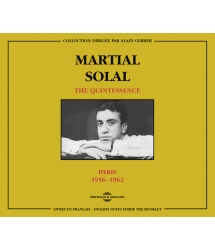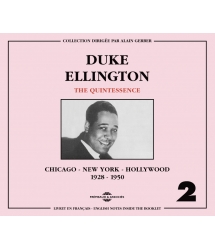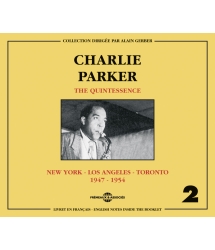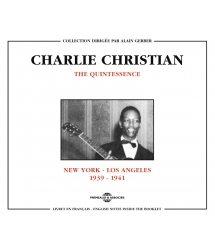- Our Catalog
- Philosophy
- Philosophers of the 20th century and today
- History of Philosophy (PUF)
- Counter-History and Brief Encyclopedia by Michel Onfray
- The philosophical work explained by Luc Ferry
- Ancient thought
- Thinkers of yesterday as seen by the philosophers of today
- Historical philosophical texts interpreted by great actors
- History
- Books (in French)
- Social science
- Historical words
- Audiobooks & Literature
- Our Catalog
- Jazz
- Blues
- Rock - Country - Cajun
- French song
- World music
- Africa
- France
- Québec / Canada
- Hawaï
- West Indies
- Caribbean
- Cuba & Afro-cubain
- Mexico
- South America
- Tango
- Brazil
- Tzigane / Gypsy
- Fado / Portugal
- Flamenco / Spain
- Yiddish / Israel
- China
- Tibet / Nepal
- Asia
- Indian Ocean / Madagascar
- Japan
- Indonesia
- Oceania
- India
- Bangladesh
- USSR / Communist songs
- World music / Miscellaneous
- Classical music
- Composers - Movie Soundtracks
- Sounds of nature
- Our Catalog
- Youth
- Philosophy
- News
- How to order ?
- Receive the catalog
- Manifesto
- Dictionnary











- Our Catalog
- Philosophy
- Philosophers of the 20th century and today
- History of Philosophy (PUF)
- Counter-History and Brief Encyclopedia by Michel Onfray
- The philosophical work explained by Luc Ferry
- Ancient thought
- Thinkers of yesterday as seen by the philosophers of today
- Historical philosophical texts interpreted by great actors
- History
- Books (in French)
- Social science
- Historical words
- Audiobooks & Literature
- Our Catalog
- Jazz
- Blues
- Rock - Country - Cajun
- French song
- World music
- Africa
- France
- Québec / Canada
- Hawaï
- West Indies
- Caribbean
- Cuba & Afro-cubain
- Mexico
- South America
- Tango
- Brazil
- Tzigane / Gypsy
- Fado / Portugal
- Flamenco / Spain
- Yiddish / Israel
- China
- Tibet / Nepal
- Asia
- Indian Ocean / Madagascar
- Japan
- Indonesia
- Oceania
- India
- Bangladesh
- USSR / Communist songs
- World music / Miscellaneous
- Classical music
- Composers - Movie Soundtracks
- Sounds of nature
- Our Catalog
- Youth
- Philosophy
- News
- How to order ?
- Receive the catalog
- Manifesto
- Dictionnary
New York - Hackensack - Chicago 1945-1961
Jay Jay Johnson
Ref.: FA3072
Artistic Direction : Direction Collection : Alain Gerber, Texte : Jean-Paul Ricard, Production Déléguée : Jean Buzelin
Label : FREMEAUX & ASSOCIES
Total duration of the pack : 2 hours 26 minutes
Nbre. CD : 2
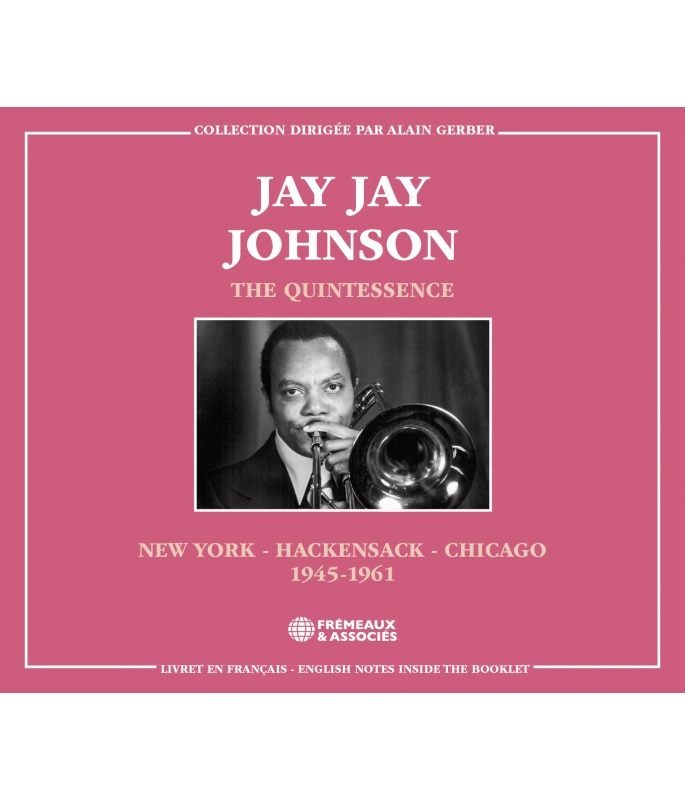
New York - Hackensack - Chicago 1945-1961
- - * * * * Le Soir
- - Recommandé par France Musique (Jazz au trésor - Alex Dutilh)
- - CHOC Jazz Magazine
New York - Hackensack - Chicago 1945-1961
Jay Jay Johnson made the trombone a modern instrument in jazz, and as a result he joined the ranks of the great creators of bebop (Charlie Parker, Dizzy Gillespie, Bud Powell, Thelonious Monk and Miles Davis) alongside whom he often played. apart from being a virtuoso instrumentalist and a first-rate improviser, he was also an excellent composer.
JEAN-PAUL RICARD
Frémeaux & Associés’ « Quintessence » products have undergone an analogical and digital restoration process which is recognized throughout the world. Each 2 CD set edition includes liner notes in English as well as a guarantee. This 2 CD set presents a selection of the best recordings by JJ Johnson between 1945 and 1961.
CD 1 - THE LEADER : JAY JAY JOHNSON BEBOPPERS (SAVOY 1946) MAD BE BOP • JAY JAY JOHNSON’S BOP QUINTET (SAVOY 1947) BONE-OLOGY • JAY JAY JOHNSON’S BOPPERS (PRESTIGE 1949) FOX HUNT • JAY JAY JOHNSON SEXTET (BLUE NOTE 1953) LOVER MAN • JAY JAY JOHNSON & KAI WINDING (SAVOY 1954) LAMENT • JAY JAY JOHNSON QUINTET (BLUE NOTE 1954/55) JAY - VISCOSITY • JAY JAY JOHNSON & KAI WINDING (COLUMBIA 1955/56) TROMBONE FOR TWO - NIGHT IN TUNISIA • JAY JAY JOHNSON QUINTET/QUARTET (COLUMBIA 1957) IN A LITTLE PROVINCIAL TOWN - COMMUTATION - BLUE TROMBONE PART 1 ET PART 2 • STAN GETZ & J.J. JOHNSON (VERVE 1957) CRAZY RHYTHM • JAY JAY JOHNSON SEXTET (COLUMBIA 1958) ALMOST LIKE BEING IN LOVE • J.J. JOHNSON ACC. FRANK DE VOL’S ORCHESTRA (COLUMBIA 1960) IN A SENTIMANTAL MOOD • J.J. JOHNSON & KAI WINDING (IMPULSE 1960) THIS COULD BE THE START OF SOMETHING • JAY JAY JOHNSON QUARTET (COLUMBIA 1960) GIGI.
CD 2 - THE SIDEMAN : BENNY CARTER & HIS ORCHESTRA (CAPITOL 1945) LOVE FOR SALE • CHARLIE PARKER SEXTET (DIAL 1947) CRAZEOLOGY • SONNY STITT WITH JAY JAY JOHNSON (PRESTIGE 1949) TEAPOT - BLUE MODE • DIZZY GILLESPIE SEXTET (SAVOY 1951) THE CHAMP • MILES DAVIS (BLUE NOTE 1953) KELO • HENRI RENAUD ALL STARS (SWING 1954) JAY JAY’S BLUES • MILES DAVIS ALL STAR SEXTET (PRESTIGE 1954) WALKIN’ • MODERN JAZZ SOCIETY (VERVE 1955) THE QUEEN’S FANCY • KENNY DORHAM (BLUE NOTE 1955) MINOR’S HOLIDAY • COLEMAN HAWKINS & HIS ALL STARS (RIVERSIDE 1957) CHANT • SONNY ROLLINS QUINTET (BLUE NOTE 1957) WAIL MARCH • BENNY GOLSON SEXTET (RIVERSIDE 1957) VENETIAN BREEZE • DIZZY GILLESPIE BIG BAND (VERVE 1961) BLUE MIST.
DIRECTION COLLECTION : ALAIN GERBER, TEXTE : JEAN-PAUL RICARD, PRODUCTION DÉLÉGUÉE : JEAN BUZELIN
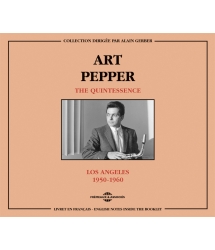
LOS ANGELES 1950-1960
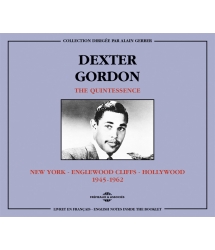
THE QUINTESSENCE NEW YORK - ENGLEWOOD CLIFFS -...
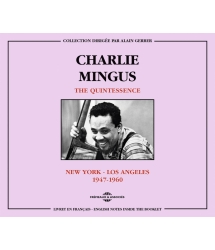
NEW YORK - LOS ANGELES (1947-1960)
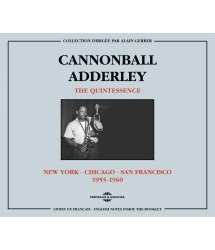
NEW YORK - CHICAGO - SAN FRANCISCO (1955-1960)




-
PisteTitleMain artistAutorDurationRegistered in
-
1Mad Be BopJay Jay JohnsonJay Jay Johnson00:02:421946
-
2Bone-OlogyJay Jay JohnsonJay Jay Johnson00:03:001947
-
3Fox HuntJay Jay JohnsonJay Jay Johnson00:02:471949
-
4Lover ManJay Jay JohnsonJimmy Davis00:03:521953
-
5LamentJay Jay JohnsonJay Jay Johnson00:04:081954
-
6JayJay Jay JohnsonJay Jay Johnson00:03:411954
-
7ViscosityJay Jay JohnsonJay Jay Johnson00:04:201955
-
8Trombone for TwoJay Jay JohnsonKai Winding00:03:161955
-
9Night in TunisiaJay Jay JohnsonDizzy Gillespie00:02:591956
-
10In a Little Provincial TownJay Jay JohnsonBobby Jaspar00:04:181957
-
11CommutationJay Jay JohnsonJay Jay Johnson00:05:151957
-
12Blue Trombone Part 1Jay Jay JohnsonJay Jay Johnson00:04:211957
-
13Blue Trombone Part 2Jay Jay JohnsonJay Jay Johnson00:05:031957
-
14Crazy RhythmJay Jay JohnsonJoseph Meyer00:07:531957
-
15Almost Like Being in LoveJay Jay JohnsonAlan Jay Lerner00:03:301959
-
16In a Sentimantal MoodJay Jay JohnsonDuke Ellington00:02:341960
-
17This Could Be The Start of SomethingJay Jay JohnsonSteve Allen00:03:121960
-
18GigiJay Jay JohnsonAlan Jay Lerner00:03:211960
-
PisteTitleMain artistAutorDurationRegistered in
-
1Love for SaleJay Jay JohnsonCole Porter00:03:021945
-
2CrazeologyJay Jay JohnsonBenny Harris00:02:571947
-
3TeapotJay Jay JohnsonJay Jay Johnson00:03:041949
-
4Blue ModeJay Jay JohnsonJay Jay Johnson00:03:461949
-
5The ChampJay Jay JohnsonDizzy Gillespie00:05:391951
-
6KeloJay Jay JohnsonJay Jay Johnson00:03:171953
-
7Jay Jay's BluesJay Jay JohnsonJay Jay Johnson00:07:501954
-
8WalkinJay Jay JohnsonRichard Carpenter00:13:251954
-
9The Queen's FancyJay Jay JohnsonJohn Lewis00:04:531955
-
10Minor's HolidayJay Jay JohnsonKenny Dorham00:04:261955
-
11ChantJay Jay JohnsonHank Jones00:05:071957
-
12Wail MarchJay Jay JohnsonSonny Rollins00:06:101957
-
13Venetian BreezeJay Jay JohnsonBenny Golson00:05:421957
-
14Blue MistJay Jay JohnsonJay Jay Johnson00:07:241957
COLLECTION DIRIGÉE PAR ALAIN GERBER
Jay Jay
JOHNSON
THE QUINTESSENCE
NEW YORK - HACKENSACK - CHICAGO
1945-1961
LIVRET EN FRANÇAIS - ENGLISH NOTES INSIDE THE BOOKLET
Jay Jay Johnson made the trombone a modern instrument in jazz, and as a result he joined the ranks of the great creators of bebop (Charlie Parker, Dizzy Gillespie, Bud Powell, Thelonious Monk and Miles Davis) alongside whom he often played. Apart from being a virtuoso instrumentalist and a first-rate improviser, he was also an excellent composer.
(Jean-Paul Ricard)
THE QUINTESSENCE
CD 1 – The leader
JAY JAY JOHNSON BEBOPPERS (Savoy 1946)
MAD BE BOP 2’42
JAY JAY JOHNSON’S BOP QUINTET (Savoy 1947)
b BONE-OLOGY 3’00
JAY JAY JOHNSON’S BOPPERS (Prestige 1949)
c FOX HUNT 2’47
JAY JAY JOHNSON SEXTET (Blue Note 1953)
d LOVER MAN. 3’52
JAY JAY JOHNSON & KAI WINDING (Savoy 1954)
e LAMENT 4’08
JAY JAY JOHNSON QUINTET (Blue Note 1954/55)
f JAY 3’41
g VISCOSITY 4’20
JAY JAY JOHNSON & KAI WINDING
(Columbia 1955/56)
h TROMBONE FOR TWO 3’16
i NIGHT IN TUNISIA 2’59
JAY JAY JOHNSON QUINTET/QUARTET
(Columbia 1957)
j IN A LITTLE PROVINCIAL TOWN 4’18
k COMMUTATION 5’15
l BLUE TROMBONE Part 1 4’21
m BLUE TROMBONE Part 2 5’03
STAN GETZ & J.J. JOHNSON (Verve 1957)
n CRAZY RHYTHM 7’53
JAY JAY JOHNSON SEXTET (Columbia 1958)
o ALMOST LIKE BEING IN LOVE 3’30
J.J. JOHNSON acc. FRANK DE VOL’S ORCHESTRA (Columbia 1960)
p IN A SENTIMANTAL MOOD 2’34
J.J. JOHNSON & KAI WINDING (Impulse 1960)
q THIS COULD BE THE START OF SOMETHING 3’12
JAY JAY JOHNSON QUARTET (Columbia 1960)
r GIGI 3’21
CD 2 – The sideman
BENNY CARTER & His ORCHESTRA
(Capitol 1945)
LOVE FOR SALE 3’02
CHARLIE PARKER SEXTET (Dial 1947)
b CRAZEOLOGY 2’57
SONNY STITT with JAY JAY JOHNSON
(Prestige 1949)
c TEAPOT 3’04
d BLUE MODE 3’46
DIZZY GILLESPIE SEXTET (Savoy 1951)
e THE CHAMP 5’39
MILES DAVIS (Blue Note 1953)
f KELO 3’17
HENRI RENAUD ALL STARS (Swing 1954)
g JAY JAY’S BLUES 7’50
MILES DAVIS ALL STAR SEXTET (Prestige 1954)
h WALKIN’ 13’25
MODERN JAZZ SOCIETY (Verve 1955)
i THE QUEEN’S FANCY 4’53
KENNY DORHAM (Blue Note 1955)
j MINOR’S HOLIDAY 4’26
COLEMAN HAWKINS & HIS ALL STARS
(Riverside 1957)
k CHANT 5’07
SONNY ROLLINS QUINTET (Blue Note 1957)
l WAIL MARCH 6’10
BENNY GOLSON SEXTET (Riverside 1957)
m VENETIAN BREEZE 5’42
DIZZY GILLESPIE BIG BAND (Verve 1961)
n BLUE MIST 7’24
Jay Jay JOHNSON – DISCOGRAPHIE
CD 1 – The Leader (1946-1960)
1 MAD BE BOP (J.J. Johnson) Savoy MG 12106
JAY JAY JOHNSON BE-BOPPERS
J.J. JOHNSON (tb), Cecil PAYNE (as), Bud POWELL (p), Leonard GASKIN (b), Max ROACH (dm). New York City, 26/06/1946
2 BONE-OLOGY (J.J. Johnson) Savoy MG 12106
JAY JAY JOHNSON’S BOP QUINTET “J.J. Johnson’s Jazz Quintets”
J.J. JOHNSON (tb), Leo PARKER (bs), Hank JONES (p), Al LUCAS (b), Shadow WILSON (dm). New York City, 24/121947
3 FOX HUNT (J.J. Johnson) Prestige LP 7023
JAY JAY JOHNSON’S BOPPERS “Trombone by Three”
Kenny DORHAM (tp), J.J. JOHNSON (tb), Sonny ROLLINS (ts), John LEWIS (p), Leonard GASKIN (b), Max ROACH (dm). New York City, 26/5/1949
4 LOVER MAN (Jimmy Davis - Ram Ramirez - James Sherman) Blue Note LP 1505
JAY JAY JOHNSON SEXTET “The Eminent Jay Jay Johnson Vol. 1”
Clifford BROWN (tp), J.J. JOHNSON (tb), Jimmy HEATH (ts, bs), John LEWIS (p), Percy HEATH (b), Kenny CLARKE (dm). New York City, 22/06/1953
5 LAMENT (J.J. Johnson) Savoy MG 12010
JAY JAY JOHNSON & KAI WINDING “Jay & Kay”
J.J. JOHNSON, Kai WINDING (tb), Billy BAUER (g), Charles MINGUS (b), Kenny CLARKE (dm). Hackensack (NJ), 24/08/1954
6 JAY (J.J. Johnson) Blue Note LP 1505
JAY JAY JOHNSON QUINTET “The Eminent Jay Jay Johnson Vol. 1”
J.J. JOHNSON (tb), Wynton KELLY (p), Charles MINGUS (b), Kenny CLARKE (dm), Sabu MARTINEZ (cga). Hackensack (NJ), 24/09/1954
7 VISCOSITY (J.J. Johnson) Blue Note LP 1506
JAY JAY JOHNSON QUINTET “The Eminent Jay Jay Johnson Vol. 2”
J.J. JOHNSON (tb), Hank MOBLEY (ts), Horace SILVER (p), Paul CHAMBERS (b), Kenny CLARKE (dm). Hackensack (NJ), 06/06/1955
8 TROMBONE FOR TWO (Kai Winding) Columbia CL 742
JAY & KAI “Trombone For Two”
J.J. JOHNSON, Kai WINDING (tb), Dick KATZ (p), Paul CHAMBERS (b), Osie JOHNSON (dm). New York City, 23/06/ 1955
9 NIGHT IN TUNISIA (Dizzy Gillespie - Frank Paparelli) Columbia CL 892
JAY & KAI “Jai (sic) & Kai plus 6”
J.J. JOHNSON, Kai WINDING, Bob ALEXANDER, Eddie BERT, Urbie GREEN, Jimmy CLEVELAND (tb), Tom MITCHELL, Bart VARSELONA (btb), Hank JONES (p), Milt HINTON (b), Osie JOHNSON (dm). New York City, 06/04/1956
10 IN A LITTLE PROVINCIAL TOWN (Bobby Jaspar) Columbia CL 1084
JAY JAY JOHNSON QUINTET “Dial J.J. 5”
J.J. JOHNSON (tb), Bobby JASPAR (fl), Tommy FLANAGAN (p), Wilbur LITTLE (b), Elvin JONES (dm). New York City, 31/01/1957
11 COMMUTATION (J.J. Johnson) Columbia CL 1030
JAY JAY JOHNSON QUARTET “First Place”
J.J. JOHNSON (tb), Tommy FLANAGAN (p), Paul CHAMBERS (b), Max ROACH (dm). New York City, 11/04/1957
12 BLUE TROMBONE Part 1 (J.J. Johnson) Columbia CL 1303
13 BLUE TROMBONE Part 2 (J.J. Johnson) Columbia CL 1303
J.J. JOHNSON QUARTET “Blue Trombone”
Same as for 11. New York City, 03/05/1957
14 CRAZY RHYTHM (Joseph Meyer- Roger Wolfe Kahn - Irving Caesar) Verve MGV 8265
STAN GETZ AND J.J. JOHNSON “At The Opera House”
J.J. JOHNSON (tb), Stan GETZ (ts), Oscar PETERSON (p), Herb ELLIS (g), Ray BROWN (b), Connie KAY (dm). Opera House, Chicago (IL), 19/10/1957
15 ALMOST LIKE BEING IN LOVE (Alan Jay Lerner - Frederic Loewe) Columbia CL 1383
JAY JAY JOHNSON SEXTET “Really Livin’”
Nat ADDERLEY (cnt), J.J. JOHNSON (tb), Bobby JASPAR (ts), Cedar WALTON (p), Spanky DE BREST (b), Al HEATH (dm). New York City, 19/03/1959
16 IN A SENTIMENTAL MOOD (Duke Ellington) Columbia CL 1547
J.J. JOHNSON acc. by FRANK DE VOL’S ORCHESTRA “Trombone & Voices”
J.J. JOHNSON (tb) + large band under dir. Frank DE VOL; unknown choir added. New York City, 28/06/1960
17 THIS COULD BE THE START OF SOMETHING (Steve Allen) Impulse A(S)1
J.J. JOHNSON AND KAI WINDING “The Great Kai And Jay”
J.J. JOHNSON, Kay WINDING (tb), Bill EVANS (p), Paul CHAMBERS (b), Roy HAYNES (dm). New York City, 03/10/1960
18 GIGI (Alan Jay Lerner - Frederic Loewe) Columbia CL 1737
JAY JAY JOHNSON QUARTET “Touch of Satin”
J.J. JOHNSON (tb), Vic FELDMAN (p), Sam JONES (b), Louis HAYES (dm). New York City, 14/12/1960
CD 2 – The Sideman (1945-1961)
1 LOVE FOR SALE (Cole Porter) Capitol 10038
BENNY CARTER & HIS ORCHESTRA
Claude DUNSON, Vernon PORTER, Teddy BUCKNER, Freddie WEBSTER (tp), Alton MOORE, J.J. JOHNSON, Shorty HAUGHTON (tb), Benny CARTER (as), Porter KILBERT (as), Eugene PORTER, Bumps MYERS (ts), Willard BROWN (bs, as), Ted BRANNON (p), Ulysses LIVINGSTONE (g), Curley RUSSELL (b), Oscar Lee BRADLEY (dm). San Francisco (CA), 25/10/1945
2 CRAZEOLOGY (Benny Harris) Dial 1034
CHARLIE PARKER SEXTET
Miles DAVIS (tp), J.J. JOHNSON (tb), Duke JORDAN (p), Tommy POTTER (b), Max ROACH (dm). New York City, 17/12/1947
3 TEAPOT (J.J. Johnson) Prestige LP 7024
4 BLUE MODE (J.J. Johnson) Prestige LP 7024
SONNY STITT with JAY JAY JOHNSON “Sonny Stitt-Bud Powell-J.J. Johnson”
J.J. JOHNSON (tb), Sonny STITT (ts), John LEWIS (p), Nelson BOYD (b), Max ROACH (dm). New York City, 17/10/1949
5 THE CHAMP (Dizzy Gillespie) Savoy MG 12047
DIZZY GILLESPIE SEXTET “The Champ”
Dizzy GILLESPIE (tp, p), J.J. JOHNSON (tb), Budd JOHNSON (ts), Milt JACKSON (vib, p), Percy HEATH (b), Art BLAKEY (dm). New York City, 16/04/1951
6 KELO (J.J. Johnson) Blue Note LP 1501
MILES DAVIS “Vol.1”
Miles DAVIS (tp), J.J. JOHNSON (tb), Jimmy HEATH (ts), Gil COGGINS (p), Percy HEATH (b), Art BLAKEY (dm). New York City, 20/04/1953
7 JAY JAY’S BLUES (J.J. Johnson) Swing 33320
HENRI RENAUD ALL STARS “Vol.1”
J.J. JOHNSON (tb), Al COHN (ts), Milt JACKSON (vib), Henri RENAUD (p), Percy HEATH (b), Charlie SMITH (dm). New York City, 07/03/1954
8 WALKIN’ (Richard Carpenter) Prestige LP 7076
MILES DAVIS ALL STAR SEXTET “Walkin’”
Miles DAVIS (tp), J.J. JOHNSON (tb), Lucky THOMPSON (ts), Horace SILVER (p), Percy HEATH (b), Kenny CLARKE (dm). Hackensack (NJ), 29/04/1954
9 THE QUEEN’S FANCY (John Lewis) Verve MGV 8131
THE MODERN JAZZ SOCIETY “ Presents a Concert of Contemporary Music”
Gunther SCHULLER (fhn), J.J. JOHNSON (tb), Jim POLITIS (fl), Manny ZIEGLER (bassoon), Tony SCOTT (cl), Stan GETZ (ts), John LEWIS (p), Percy HEATH (b), Connie KAY (dm), Janet PUTMAN (harp). New York City, 14/03/1955
10 MINOR’S HOLIDAY (Kenny Dorham) Blue Note LP 1535
KENNY DORHAM “Afro-Cuban”
Kenny DORHAM (tp), J.J. JOHNSON (tb), Hank MOBLEY (ts), Cecil PAYNE (bs), Horace SILVER (p), Oscar PETTIFORD (b), Art BLAKEY (dm), Carlos “Potato” VALDES (cga). Hackensack (NJ), 29/03/1955
11 CHANT (Hank Jones) Riverside RLP 12-223
COLEMAN HAWKINS & HIS ALL STARS “The Hawk Flies High”
Idrees SULIEMAN (tp), J.J. JOHNSON (tb), Coleman HAWKINS (ts), Hank JONES (p), Barry GALBRAITH (g), Oscar PETTIFORD (b), Jo JONES (dm). New York City, 12/03/1957
12 WAIL MARCH (Sonny Rollins) Blue Note LP 1558
SONNY ROLLINS QUINTET “Vol.2”
J.J. JOHNSON (tb), Sonny ROLLINS (ts), Horace SIVER (p), Paul CHAMBERS (b), Art BLAKEY (dm). New York City, 14/04/1957
13 VENETIAN BREEZE (Benny Golson) Riverside RLP 12-256
BENNY GOLSON SEXTET “The Modern Touch”
Kenny DORHAM (tp), J.J. JOHNSON (tb), Benny GOLSON (ts), Wynton KELLY (p), Paul CHAMBERS (b), Max ROACH (dm). New York City, 23/12/1957
14 BLUE MIST (J.J. Johnson) Verve V-8411
DIZZY GILLESPIE BIG BAND “Perceptions”
Dizzy GILLESPIE, Robert NAGEL, Bernie GLOW, Nick TRAVIS, Doc SEVERINSEN (tp), Jimmy BUFFINGTON, John BARROWS, Paul INGRAHAM, Robert NORTHERN (fhn), Williams STANLEY, Harvey PHILLIPS (tu), Jimmy KNEPPER, Urbie GREEN, Paul FAULISE, Dick HIXSON (tb), George DUVIVIER (b), Charlie PERSIP (dm), Michael COLGRASS (perc), Gloria AGOSTINI, Laura NEWELL (harp), J.J. JOHNSON (arr), Gunther SCHULLER (cond). Englewood Cliffs (NJ), 22/05/1961
Jay Jay JOHNSON
NEW YORK - HACKENSACK - CHICAGO
1945-1961
“My real name, the one my parents gave me, is James Louis Johnson, but I had to change it. At school they called me Jay Jay, (his initials were “J. J.”, for James Johnson) and slowly people began writing my name as “J. J. Johns” and that was what they printed on billboards and contracts. So I had to have it changed officially. My legal name is “J. Jay Johnson.”¹
Born in Indianapolis on 22 January 1924, he started to learn piano when he was nine, but he listened to jazz in his teens and liked the trombone, which he took up five years later. Playing in amateur bands he had grown fond of players like Jack Teagarden, Trummy Young or Dicky Wells (alongside whom he later found himself playing in the Count Basie Orchestra) and then he heard Fred Beckett, a little-known trombonist who played in Harlan Leonard’s band, and at the age of 17 Jay Jay decided to turn professional.
In 1941 he was hired by Clarence Love, and played with him for a year before joining Snookum Russell’s orchestra, where he met trumpeter Fats Navarro. Fats suggested that he ought to play the trombone like Lester Young played tenor saxophone, and in later years J.J. would say Lester Young influenced his playing as much as the trumpeters Roy Eldridge and Dizzy Gillespie, and also alto saxophonist Charlie Parker...
From 1942 to 1945 Jay Jay played in Benny Carter’s band, and on 25 October 1943, he recorded his first major solo, Love For Sale (CD2/1). During that same period, on 2 July 1944 he played in the inaugural Jazz At The Philharmonic concert (JATP) that producer Norman Granz promoted in Los Angeles. In 1945 he joined Count Basie and spent a year in his orchestra before being attracted by echoes of what was happening over in 52nd Street in Harlem, where all the young boppers were jamming, and Jay Jay decided to set up his own group. Under the name “The Jay Jay Johnson BeBoppers”, in 1946 they recorded four titles for Savoy, among them Mad Be Bop (CD1/1). A second session for Savoy in 1947 produced Bone-Ology, (CD1/2). December that year saw intense activity over two weeks with the trombonist taking part in several sessions alongside Coleman Hawkins, Leo Parker, Illinois Jacquet and Charlie Parker (Crazeology, CD2/2). Between ’47 and ’49 Jay Jay toured and recorded with Illinois Jacquet while occasionally playing with the orchestras led by Dizzy Gillespie and Woody Herman. In January 1949 he did his first recording with fellow trombonist Kai Winding, and both were members of the Metronome All Stars band that included Miles Davis, Dizzy Gillespie, Fats Navarro and Charlie Parker. Winding and Johnson soon met up again (in March 1950) as members of an All Star Band led by bassist Chubby Jackson. During this period, Johnson toured and recorded with trumpeter Howard McGhee, and most importantly in April 49 and March 50 he played on two of the three “Birth Of The Cool” sessions led by Miles Davis.
Apart from Jay Jay’s talents as an instrumentalist, the sessions in which he featured would also reveal Johnson’s skills as a composer, as shown by two sessions he did for the label Prestige in May (Fox Hunt, CD1/3) and October, accompanied by saxophonist Sonny Stitt and pianist Bud Powell (Teapot, Blue Mode, CD2/3-4). In spring 1951 he went into the studio with Dizzy Gillespie to record The Champ (CD2/6), and at year-end he visited U.S. Army bases in Korea, Japan and the Pacific Ocean with McGhee and Oscar Pettiford.
In 1952 he decided he wasn’t earning enough of a living in music and took a day job as a blueprint inspector. He continued playing his trombone every day, however, ensuring he was ready if any job opportunities arose, and in April 1953 it paid off when Miles Davis wanted to record for Blue Note with a sextet (Kelo, CD2/5). In June Jay Jay appeared in the studio again for the label, this time leading his own sextet to record Lover Man, (CD1/4) and then again on two occasions (in 1954 and 1955) this time with a quintet (Jay, Viscosity, CD1/6-7). On a visit to New York in early 1954, French pianist Henri Renaud recorded with Johnson, Milt Jackson, Al Cohn and Oscar Pettiford (Jay Jay’s Blues, CD2/7), and later in April Jay Jay rejoined Miles Davis for one of the trumpeter’s major sessions which produced Walkin’, (CD2/8).
As far as club appearances were concerned, in September ’53 Johnson went onstage at Brooklyn’s Putnam Central Club with his colleagues Willie Dennis, Bennie Green, and again Kai Winding. The four trombones had a superb rhythm section with them (it featured John Lewis, Charles Mingus and Art Taylor.) Their concerts were recorded for release on the new Debut label created in 1952. Winding was slightly older than Johnson (he was born in Denmark in 1922) and had made a name for himself with bands led by Benny Goodman, Stan Kenton, Artie Shaw and Woody Herman. It was producer Ozzie Cadena who persuaded Johnson and Winding to record together, and he brought both of them into the studio on
23 August 1954. Jay Jay would tape one of his most famous compositions, Lament (CD1/5). The understanding between the two trombonists was perfect, and it marked the beginning of a highly successful partnership that lasted until 1956, with several new opportunities reuniting them later (in 1958, 1960, 1968) that produced a magnificent series of albums for Prestige, Bethlehem, Columbia (Trombone For Two, Night In Tunisia, CD1/8-9) and Impulse (This Could Be The Start Of Something Big, CD1/18). In parallel with his trombone duos, Johnson was much in demand as an instrumentalist and worked with Coleman Hawkins (Chant, CD2/11) and Kenny Dorham (Minor’s Holiday, CD2/10), while beginning to take an interest in “Third Stream” experiments by participating in the works of the Modern Jazz Society along with John Lewis (The Queen’s Fancy, CD2/9).
In 1956 Johnson signed with Columbia and recorded a dozen albums for the label in the four years up to 1960. The series of works he recorded showed a rich diversity, and the music proposed revealed not only his instrumental virtuosity but also his skills as a composer and arranger. Johnson also demonstrated a talent for choosing musicians to accompany him in performing his own creations: the albums J Is For Jazz and Dial J.J. 5 showed his affinities with Belgian saxophonist/flautist Bobby Jaspar (In A Little Provincial Town, CD2/10). 1957 saw two successful releases by the trombonist, First Place and Blue Trombone played by a quartet (Commutation, Blue Trombone Part 1 & 2, CD1, tracks 11-12-13). That same year he jousted with Stan Getz at the Chicago Opera House (Crazy Rhythm, CD1/14), recorded with Sonny Rollins (Wail March, CD 2/12) and Benny Golson (Venetian Breeze, CD2). In 1958 appeared the live recording J.J. In Person, with Nat Adderley playing cornet. With the latter, in 1959 Johnson made the sextet recording Really Livin’ where he was rejoined by Bobby Jaspar (Almost Like Being In Love, CD1/15). In June 1960 came Johnson’s surprising Trombone And Voices album on which he was the only soloist, backed by an unidentified orchestra and choir conducted by Frank De Vol (In A Sentimental Mood, CD1/16). Two months later, for J.J. Inc., he put together another sextet that featured notably Freddie Hubbard, Clifford Jordan and Cedar Walton. And at the end of 1960 he went back to the quartet format to record the album Touch Of Satin, closing his association with Columbia Records (Gigi, CD1/18).
Jay Jay would become a freelance musician for the rest of his career and demonstrate his leanings towards composition. Since the early fifties he had been close to the Third Stream founders (John Lewis, Gunther Schuller), and now he would not only participate in creations of their works but compose those of his own (such as his Jazz Suite For Brass that was performed at Town Hall in New York in October 1956, with Miles Davis as the soloist.) From the sixties onwards, this aspect of Johnson’s work would predominate. In 1961 he wrote a new suite in six movements that he entitled Perceptions, and this time the trumpet soloist was Dizzy Gillespie (Blue Mist, CD2/14). In 1965 he spent time in Vienna where he played and recorded a Euro Suite with an orchestra conducted by Friedrich Gulda. From the end of 1964 until late 1966 he released a series of big band albums for RCA Victor which consecrated his talents as an arranger.
In 1970, following the advice of Quincy Jones, Johnson moved to California to pursue his composing in films (writing scores for Shaft, Cleopatra Jones, Top Of The Heap) and television (with music for the series Starsky & Hutch, Mike Hammer or The Six Million Dollar Man.) He would play little during this period, except for appearances on two tours in Japan (1977 and 1982) and one in Europe (1984). He did continue recording however, making a few duo albums with fellow trombonist Al Grey before reforming a quintet in 1987 which he took into the Village Vanguard in New York. He was playing a concert in Japan when he learned that his wife had fallen victim to a heart attack, and in 1991 he dedicated a new album to her (Vivian, released by Concord). J.J. remarried in 1992 and recorded again before retiring to his native Indianapolis en 1996. He took his own life on 2 April 2001 after being diagnosed with prostate cancer. He was 77.
Jean-Paul RICARD
© 2024 FRÉMEAUX & ASSOCIÉS
1. In an interview with Jean-Michel Proust, Jazz Magazine n° 446, March 1995.
